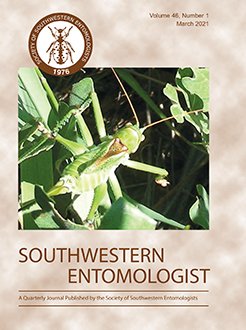The sugarcane aphid, Melanaphis sacchari (Zehntner), is a major insect pest of sorghum (Sorghum bicolor (L.) Moench) in Mexico and United States of America. This review reports current advances for the biology of the aphid, crop damage, and sampling strategies to detect the pest. We focused on management through cultural control including resistant varieties, biological control with native parasitoids and predators and use of entomopathogenic fungi, legal control, and chemical control. Life stages of the aphid are nymph, nymphal alate, super nymph, and adult. Females have parthenogenetic reproduction and under adverse conditions, viviparous reproduction. Damage to the sorghum crop by feeding nymphs and adults causes stress to the plants and yield loss. To detect the pest, leaves should be sampled each week or yellow traps used with soapy water to monitor arrival of winged adults. Cultural practices recommended are destroying foci of infection and using established official planting dates and appropriate fertilization. Currently, the main control strategy is foliar application of insecticides. However, numerous species of predators, parasitoids, and entomopathogenic fungi affect sugarcane aphids in the USA and Mexico. The organisms could sustain control of the aphid, but few have been evaluated in the field. Studies of sorghum varieties in areas of México and the USA allowed identification of genotypes with resistance to sugarcane aphids. Considering sampling strategies, biology, and life cycle studies, search for an organism with potential for biological control of M. sacchari, and identification of sorghum genotypes with resistance to damage, it is possible to develop an integrated management strategy against sugarcane aphid. For future research, it is important to develop bioassays for monitoring resistance to insecticide, study interaction between factors that favor natural and induced control with natural enemies, and promote planting of sorghum genotypes with resistance.
How to translate text using browser tools
25 March 2021
Current Advances in Biology, Distribution, and Management of Melanaphis sacchari (Zehntner) in México and United States of America
Jorge Zambrano-Gutiérrez,
Raquel Alatorre-Rosas,
J. Refugio Lomelí-Flores,
Remigio A. Guzmán-Plazola,
Ausencio Azuara-Domínguez,
Ma. Guadalupe Carrillo-Benítez,
Fernando Tamayo-Mejía
ACCESS THE FULL ARTICLE

Southwestern Entomologist
Vol. 46 • No. 1
March 2021
Vol. 46 • No. 1
March 2021




